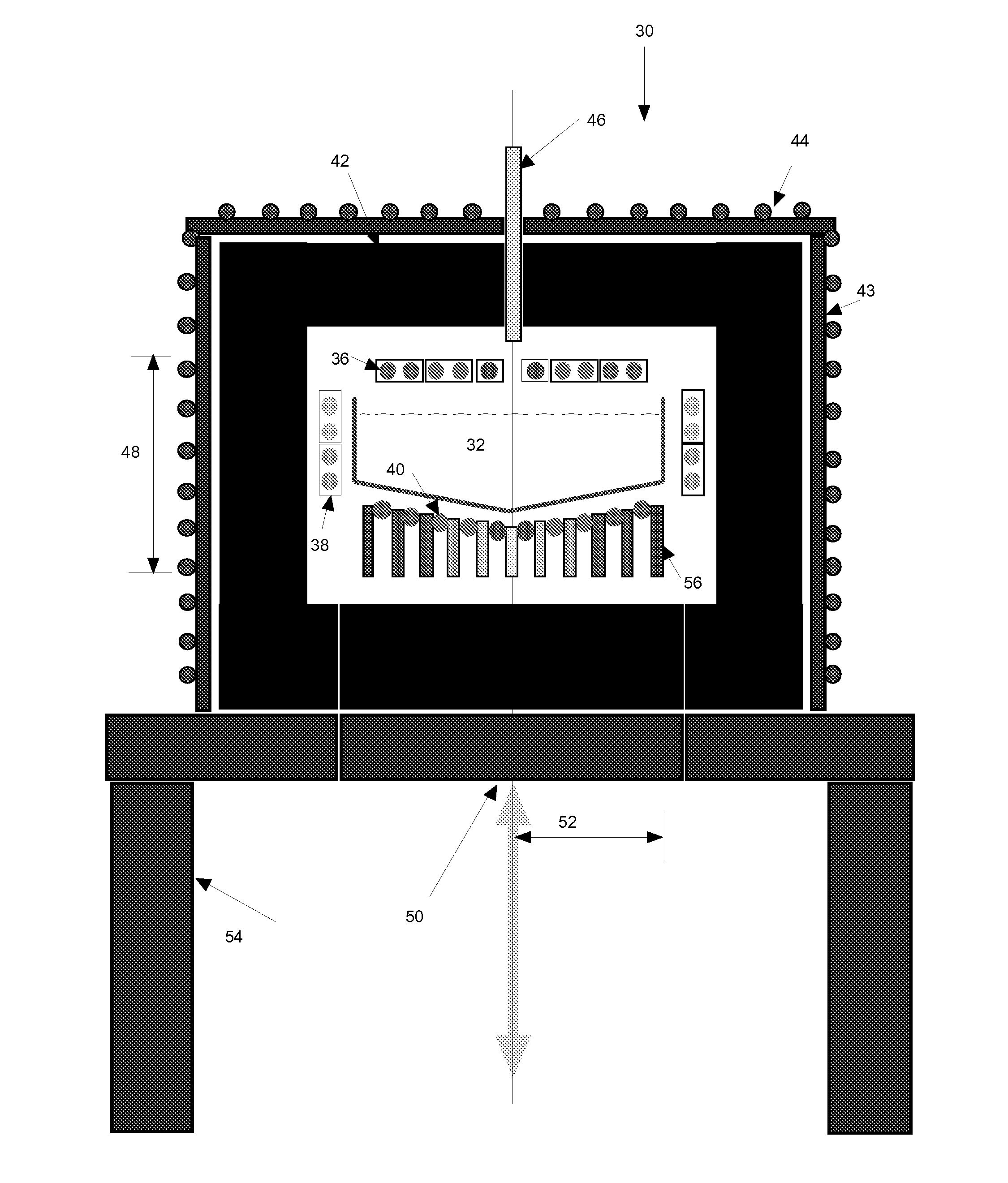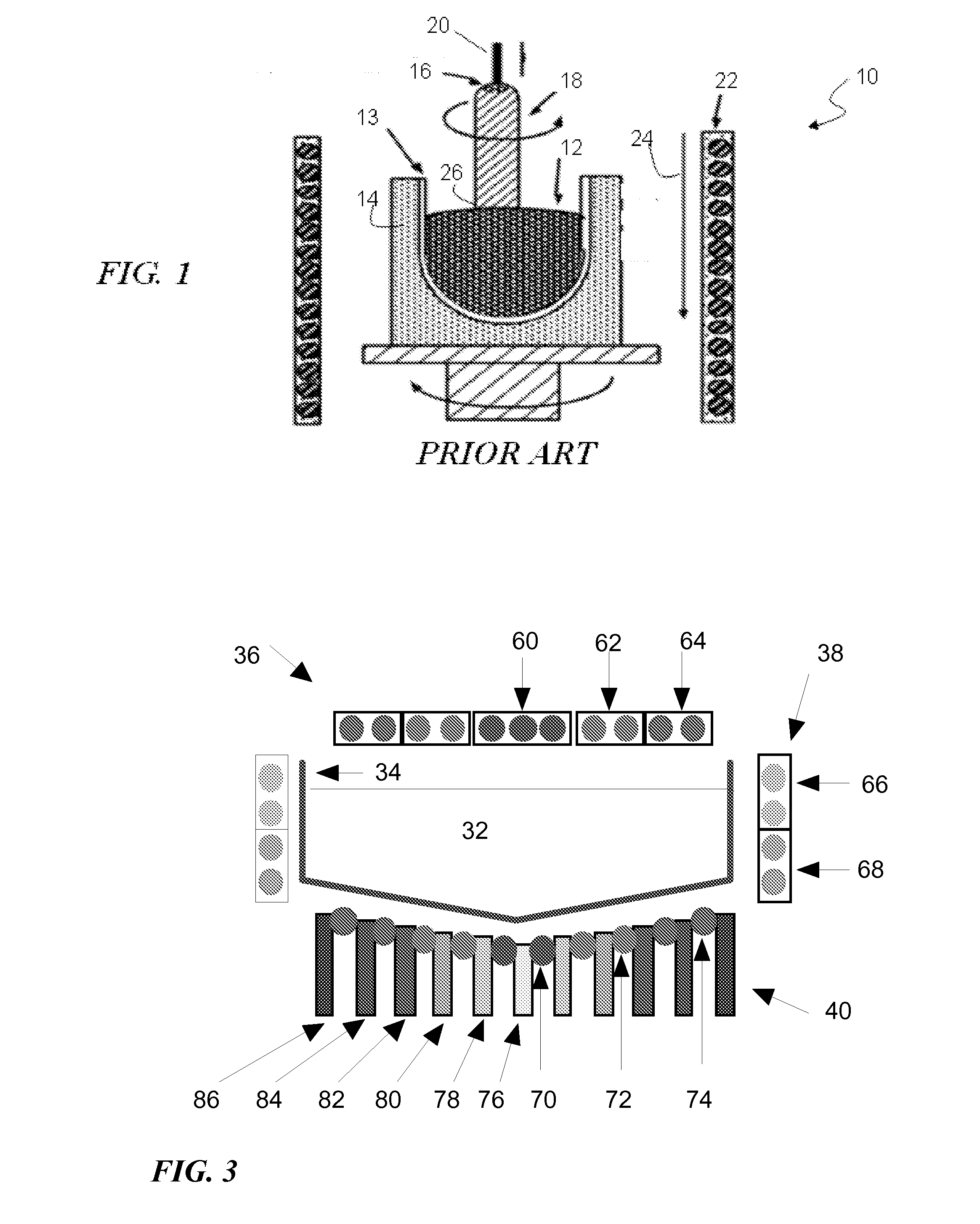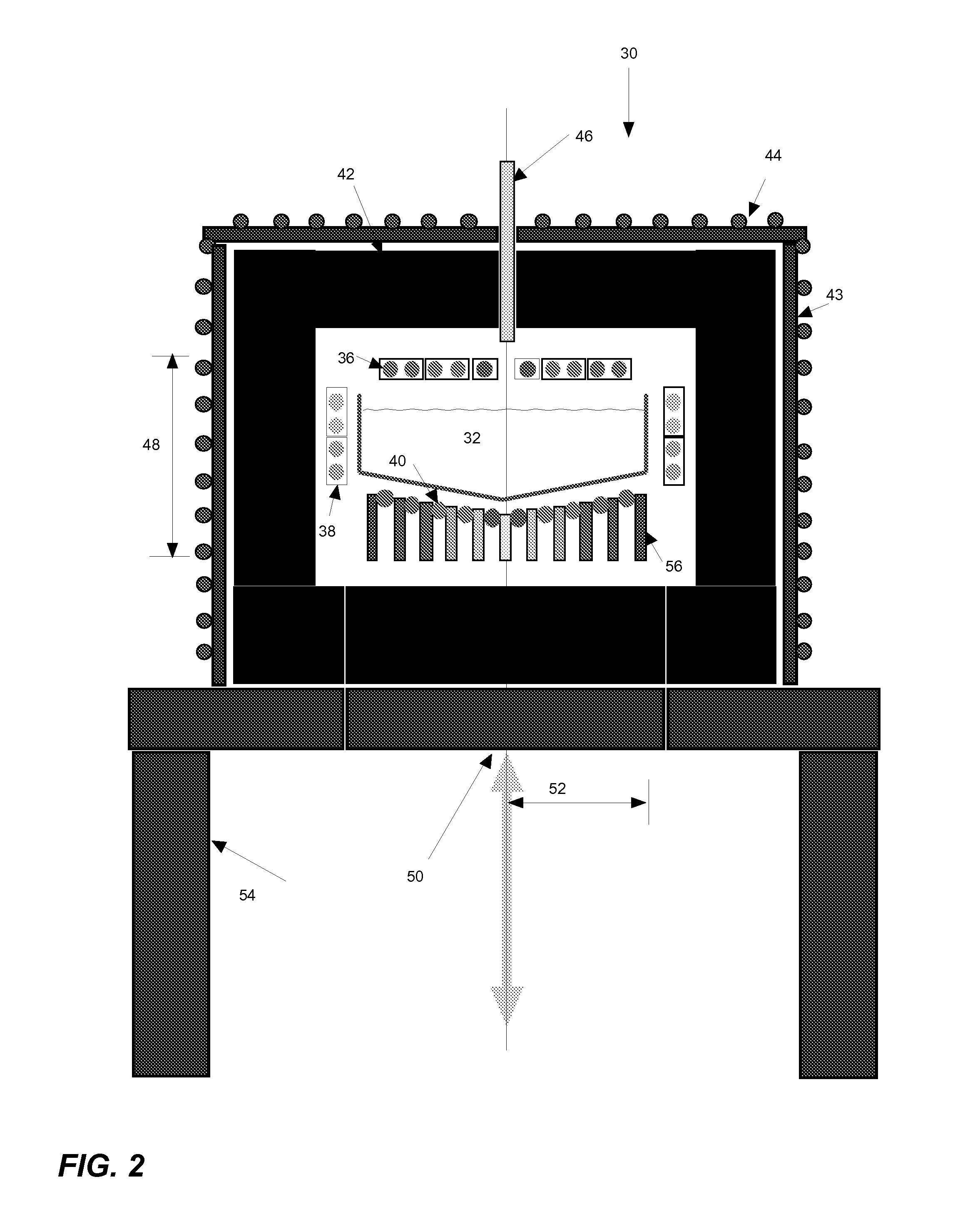Large grain, multi-crystalline semiconductor ingot formation method and system
- Summary
- Abstract
- Description
- Claims
- Application Information
AI Technical Summary
Benefits of technology
Problems solved by technology
Method used
Image
Examples
embodiment 150
[0037]As with the above-described process environments, process environment 150 may include a set of lower heating elements 162. Lower heating elements 162 may include individually controllable heaters 164 through 174 for managing temperatures, mixing and solidification of silicon melt 32, while accommodating the various control features and concerns relating to the non-symmetrical nature of modified crucible 152. Embodiment 150 may include upper heating elements as shown in FIGS. 2, 3, 5 and 7, aligned on the crucible shape and the process environment.
[0038]For a more clear view of modified 152, FIG. 9 shows an isometric perspective wherein below line or plane 155 appears slanted bottom 154. Bottom 154, due to the slant forms a process control volume 156 wherein silicon crystallization may initially occur. Heating element 160, therefore, provides process temperature control for process control volume 156. Within process control volume 156 silicon crystallization may initially occur...
embodiment 180
[0039]FIG. 10 shows an embodiment 180 for a direct solidification of a silicon melt using a seed crystal to get a monocrystalline silicon ingot or a multicrystalline ingot with large grain sizes and a lower number of grains for a given volume. In particular, seed crystal 33 may be positioned at the bottom of crucible 34, which may include all of the various forms and shapes of crucibles herein disclosed. Moreover, using the local and precise silicon crystallization techniques here disclosed, the combination of a seed crystal may further enhance the growth of large grain sizes and, consequently, is within the scope of the present disclosure.
[0040]The present disclosure, therefore, provides a multi-crystalline silicon ingot with a preferably low number of big grains. Using the presently disclosed fabrication system, silicon melt 32 may be cooled-beginning from the center of crucible 34—using an Argon or helium flow and the programmably controlled heating elements 40. This translates t...
PUM
 Login to View More
Login to View More Abstract
Description
Claims
Application Information
 Login to View More
Login to View More - R&D
- Intellectual Property
- Life Sciences
- Materials
- Tech Scout
- Unparalleled Data Quality
- Higher Quality Content
- 60% Fewer Hallucinations
Browse by: Latest US Patents, China's latest patents, Technical Efficacy Thesaurus, Application Domain, Technology Topic, Popular Technical Reports.
© 2025 PatSnap. All rights reserved.Legal|Privacy policy|Modern Slavery Act Transparency Statement|Sitemap|About US| Contact US: help@patsnap.com



